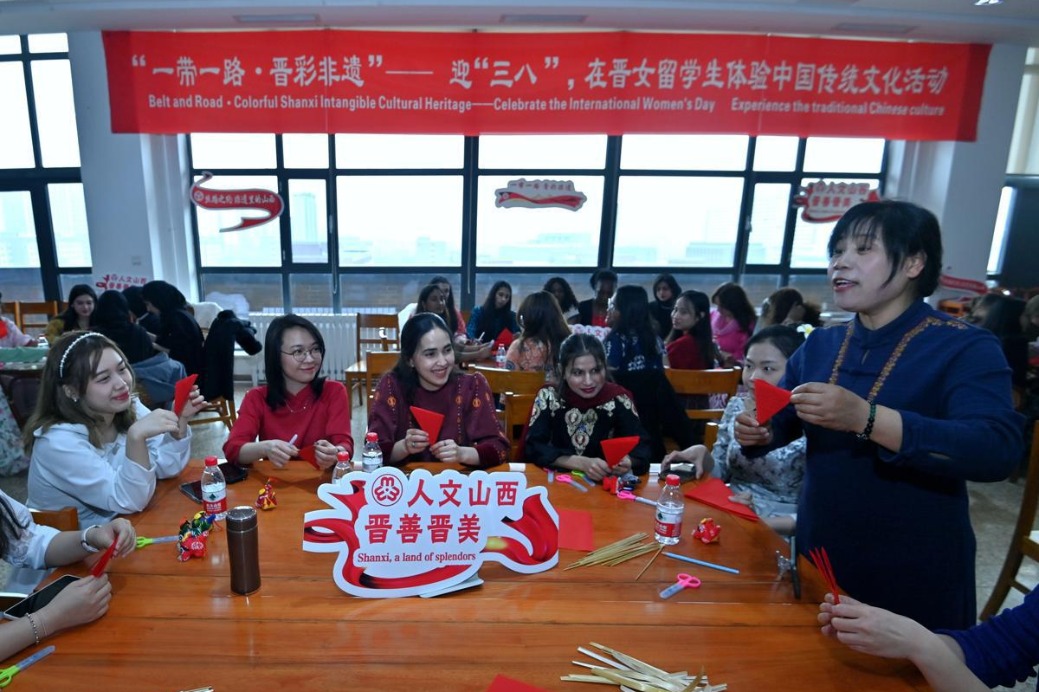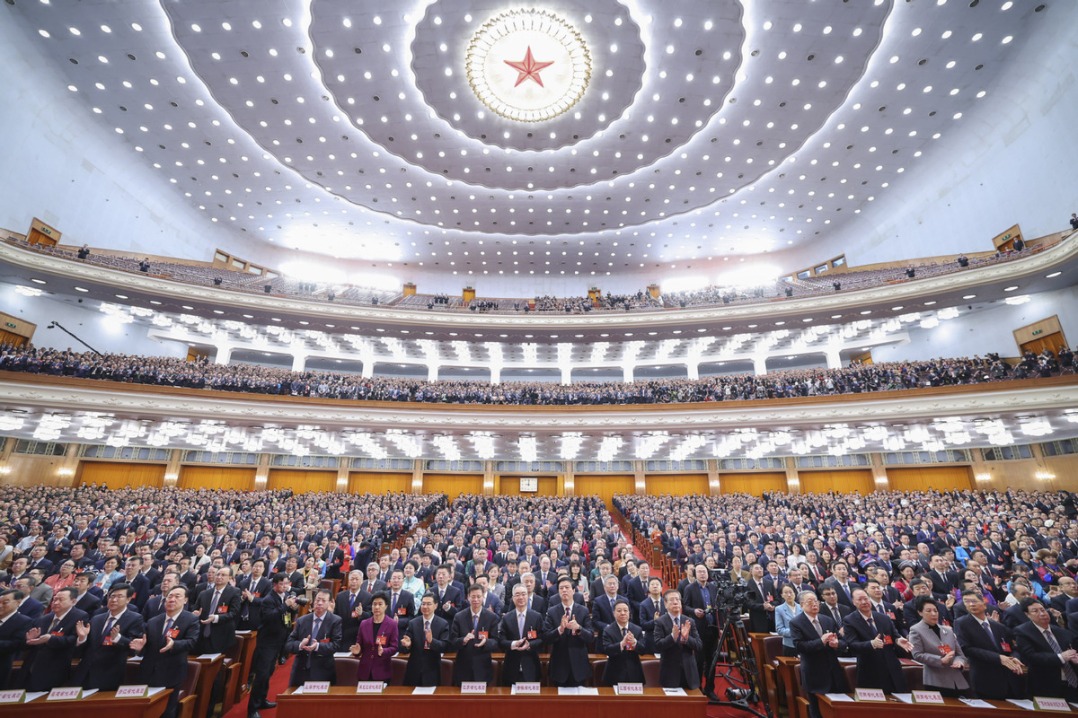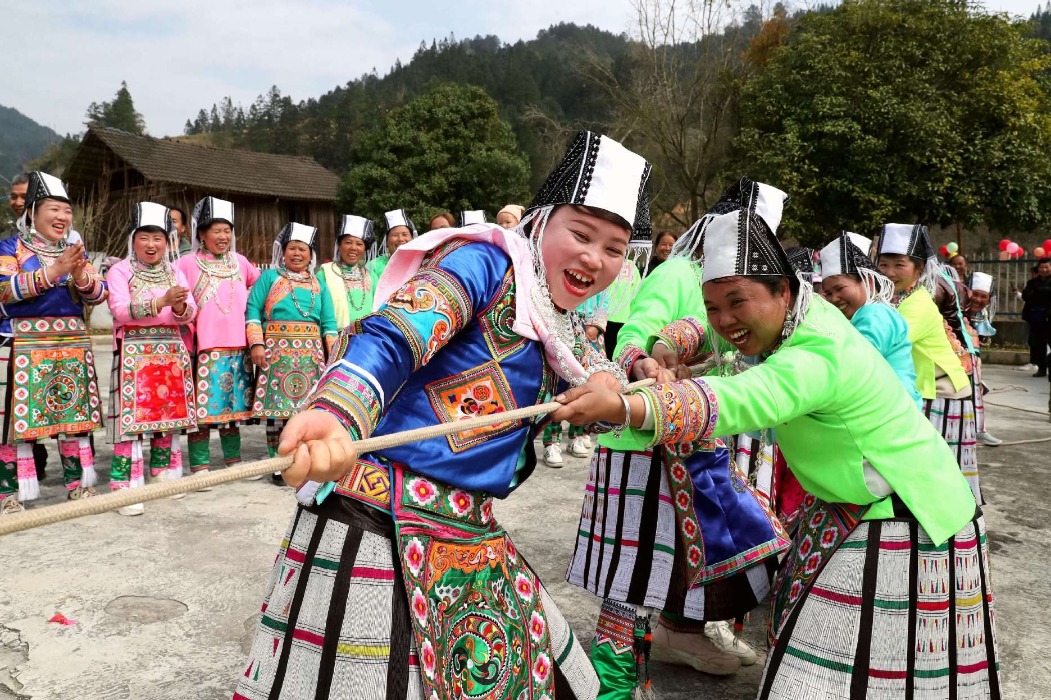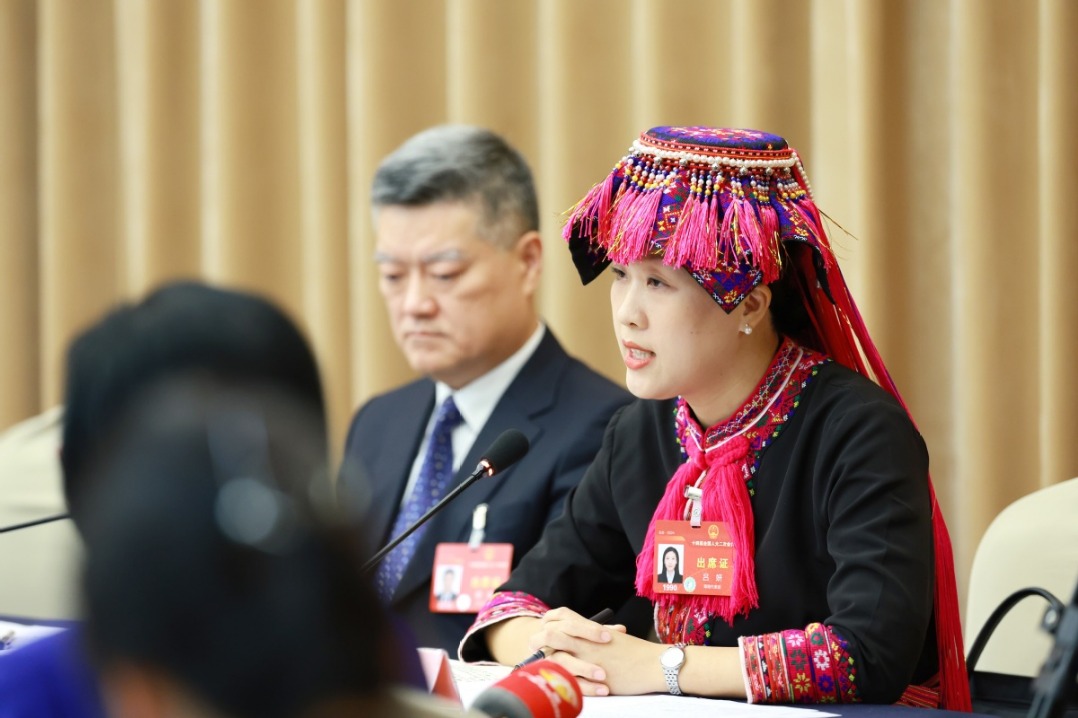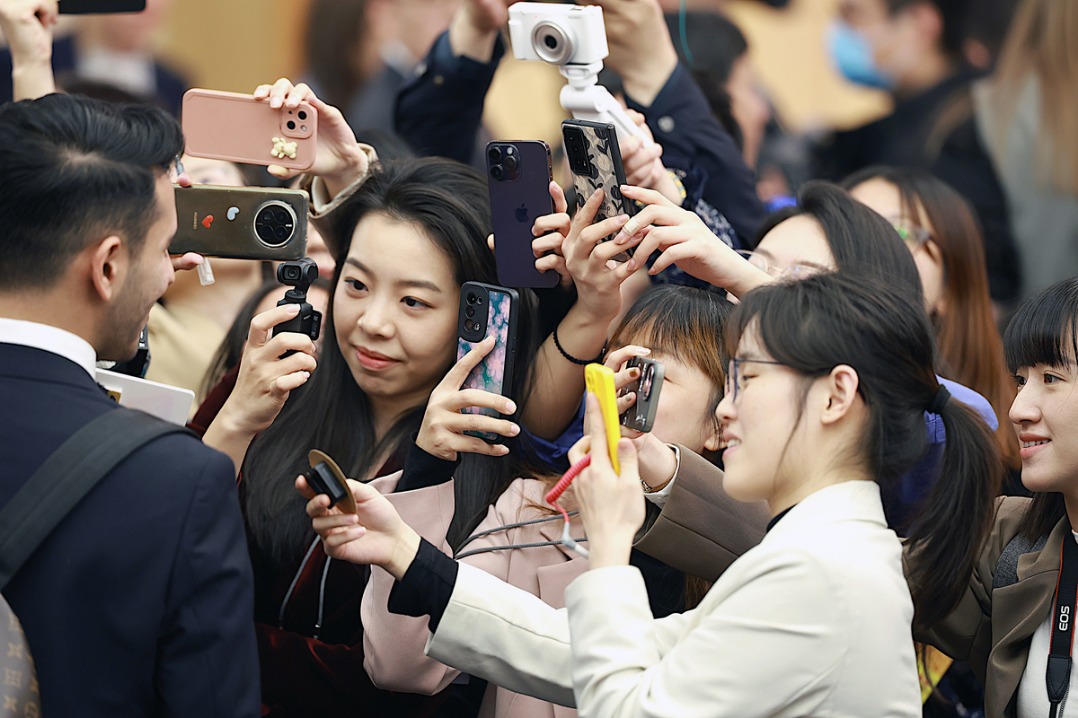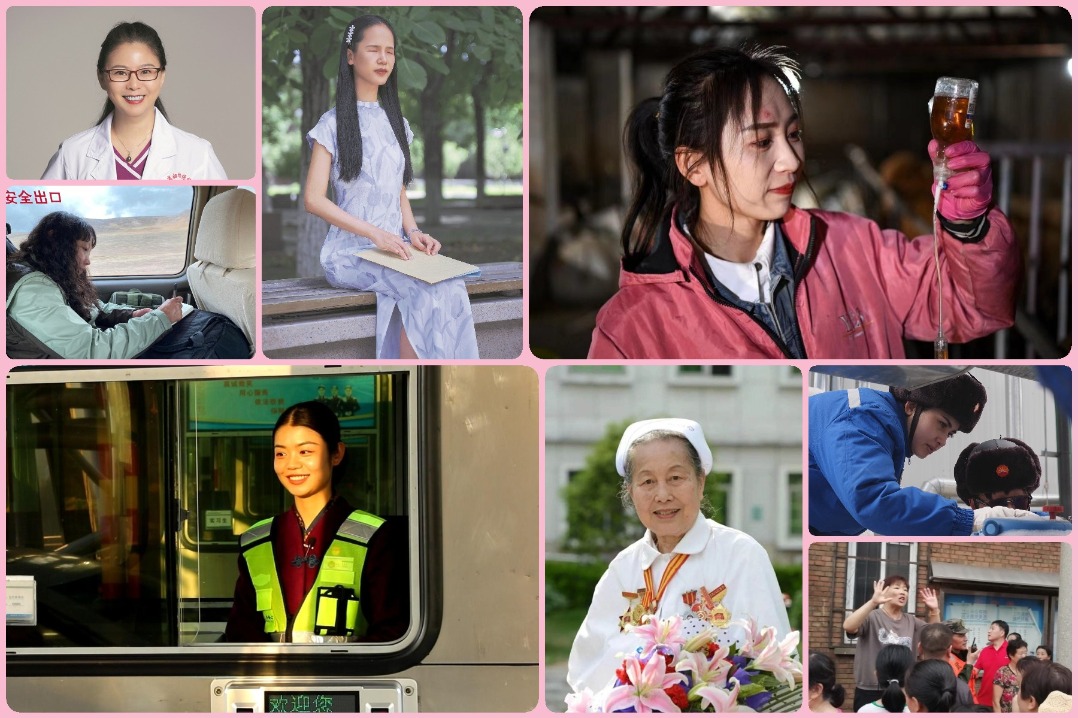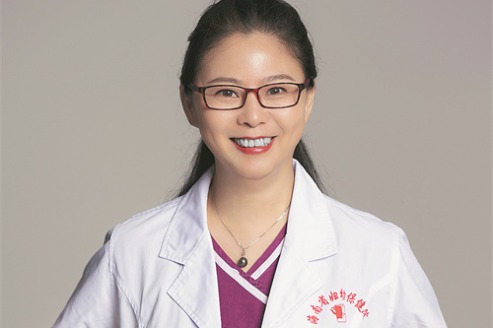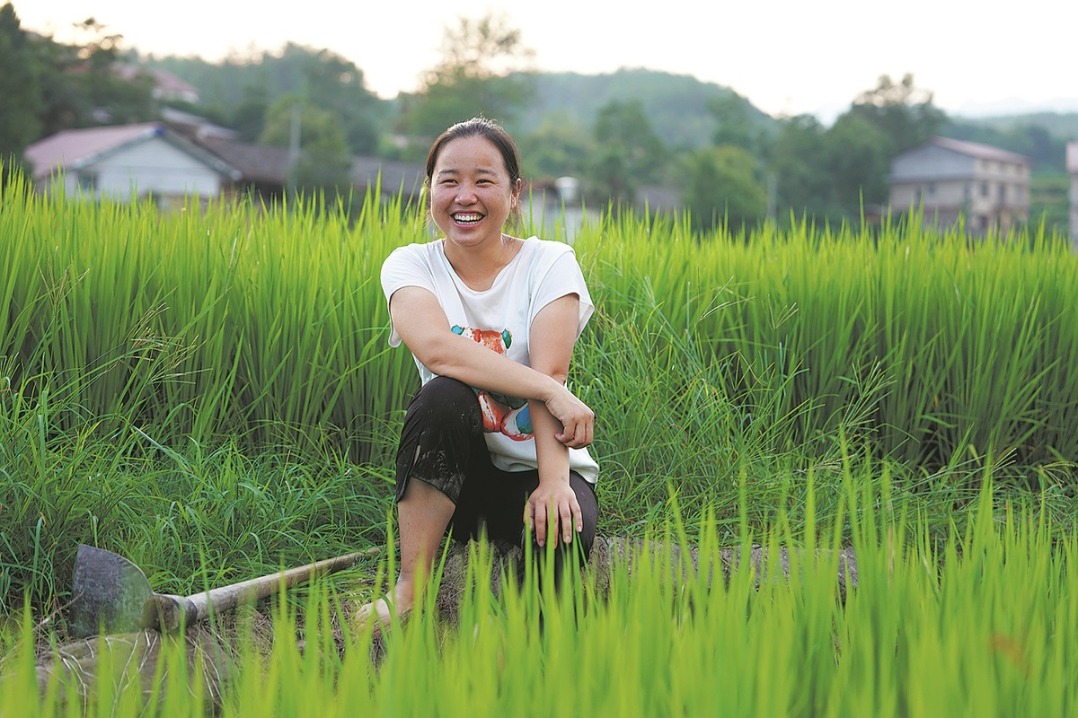Students' passion for technology has no bounds


On a demonstration video online, fish-shaped lanterns wiggle in the air as if they are roaming in the water — the brainchild of a group of teenage inventors who've added life to light containers made with paper.
Unlike string-rigged marionettes or magical tricks using undetectable techniques, the vivid fish lanterns come from a built-in artificial intelligence system developed by the "machine creation" group at Shenzhen Yangang Middle School.
"In a fish-lantern dance, dancers carry lanterns and simulate the movement of fish in their performance, and this calls for lots of practice," says Jiang Jiahan, 17, one of the lantern's chief inventors.
Jiang, who's in his last year at high school, says his team wants to lower the threshold with an AI-driven fish lantern that can move on its own. "It'll enable more people to participate in the traditional performance art."
The fish-lantern dance is a long-standing cultural heritage at Sha Tau Kok, which straddles Shenzhen's Yantian district, where Jiang's school is located, and the northeastern New Territories of the Hong Kong Special Administrative Region.
Yangang Middle School adopts a hybrid teaching mode, providing both academic-oriented and vocational education. Many vocational students join the scientific unit to hone their skills. The AI system used in the fish lanterns, called the "Dancer of Shadow", was a realization of computer-passionate students.
Tan Wenbo, 18, a final-grade student in charge of the system's development, explains that a sensor on the head of a lantern will identify different graphs in stages and transmit the result to a circuit board. The board, linked to two small motors on the lantern's head and tail, will drive the paper fish to perform corresponding moves.
According to Jiang, the rules are based on the habits of real fish. "For example, if a fish sees seaweed, which can be food, it may dance more frequently to show its excitement. If it sees corals, which can be a favorite for fish to rest near or hide among, it feels relaxed and will move slightly slower."
In different scenarios, the latest mode of the AI fish lantern has seven sets of movements. The idea was proposed by Jiang's upper-class pupils, and one of its prototypes was completed by the time he joined the group. "The old model's weight was too heavy to carry," he says, "and its card paper shell became crumpled in wet weather."
Majoring in industrial arts, Jiang crafted the lanterns with xuan paper — a classic material used for Chinese painting and calligraphy — and iron wiring. The improvement cut the lantern's weight from 5 kilograms to 2 kilograms.
Senior students' commitment to the AI fish lantern has been inherited by newcomers. Chen Xiaojia, a 17-year-old in her second year in senior high school, joined the project last year, and is now working on its motor and camera systems. She grinned as she recalled the anecdotes she heard from senior students about the lantern's development, including their additional efforts to carry on group discussions in spite of challenges posed by school closures during the COVID-19 pandemic.
Chen says the project ignited her passion for innovation, and she intends to take up relevant university courses, so do Jiang and Tan.
Yang Tao, 17, who worked on the AI system's coding part, says he had had no programming experience, and taught himself to code after joining the fish-lantern project.
Apart from the AI fish lantern, members of the school's science society are focusing their sights on other scientific inventions using their expertise. Qiu Yiyuan, 17, created a hand-sized robotic vehicle that can lift small objects. Another member of the group, Tang Tang, 16, developed a box device using water to generate electricity that can light up a bulb.
Zhang Qiang, the society's consultant teacher, says the school hopes that students can explore their interests freely and identify their future careers through after-class activities.
Wang Jiarui, another consultant teacher, says she's glad to see so many members of the group finding research topics spontaneously and turning them into concrete results. These findings can vitalize intangible cultural heritage and also help with its future development, she says.
- Students' passion for technology has no bounds
- Students celebrate Women's Day via Chinese culture
- Xi calls on political advisors to offer suggestions, build consensus for Chinese modernization
- China's homegrown C919 jetliner flies on third regular route
- Xi highlights developing new quality productive forces according to local conditions
- Over 2,000 prosecuted for tomb raiding, trafficking of cultural relics
















